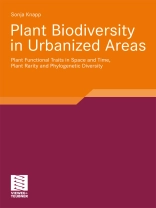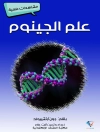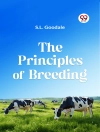Urban areas are increasing more and more and human’s first contact to nature will take place in cities. More than 50 % of the world’s human population is concentrated in urban areas; this number is even higher in Central Europe. These are the main reasons for the increasing number of studies on urban ecology – cluding urban flora and vegetation. One surprising outcome of these studies was the higher species richness in urban areas in comparison to the open cultural landscape in Central Europe. This stable pattern has been found within several studies on several cities since the 70s of the last century. The main tasks of the dissertation of Sonja Knapp can be summarised in the following questions: What are the main causes for higher species richness and what processes govern this pattern? Is species richness linked with ecological traits and is species richness in urban areas linked with phylogenetic diversity? Sonja Knapp’s dissertation “Plant Biodiversity in Urbanized Areas – Ana- ses of Plant Functional Traits in Space and Time, Plant Rarity and Phylogenetic Diversity” presents new insights into biodiversity processes in urban areas.
Table des matières
General Introduction.- Urbanization Causes Shifts of Species’ Trait State Frequencies – a Large Scale Analysis.- Does Urbanization Cause Shifts of Species’ Trait State Frequencies? – A Small Scale Analysis.- How Species Traits and Affinity to Urban Land Use Control Plant Species Frequency.- Changes in the Functional Composition of a Central European Urban Flora over Three Centuries.- Challenging Urban Species Diversity: Contrasting Phylogenetic Patterns across Plant Functional Groups in Germany.
A propos de l’auteur
Dr. Sonja Knapp completed her doctoral thesis at the Department of Community Ecology at the Helmholtz-Centre for Environmental Research – UFZ in Halle and at the Department of Ecology, Evolution & Diversity at Frankfurt University, Germany.












